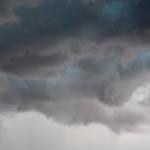We can understand what Buddhism observes about phenomena with an ontological distinction: the difference between pure being (which must be unchanging) and relative being, which can be said to only participates in being (and as such, it is shown to be subject to change and decay). The divergence between the two is vast. What participates in being is what is said to be empty, because it lacks inherent being. That which inherently exists would be independent in its existence: it would have to be its own cause, and, by definition, it could have no beginning or end.
In order to make claims about phenomena, Buddhism developed a sophisticated approach with which it used to analyze them. Indeed, it had to point out that what is described in convention to exist cannot be said, on an absolute level, to actually be. That is, any given phenomenon we describe cannot really be found. For when we examine a given phenomenon, it is composite in form, and each of its parts, when separated from the phenomenon, could not be said, by itself, to be that phenomenon. Any part, when looked at in this way, is shown not to be the phenomenon, and yet, when put together, we state the phenomenon is there. We cannot find the phenomenon, as a thing in itself, only when its parts are contingently put together to form it does it come to be. For this reason, phenomena are said to be conventions, not realities. Because the phenomenon can not be found in any of its parts, and is only conventionally said to exist when all its parts are brought together, Mahayanists deny absolute value to phenomena. Absolute truth can only be what is unchanging and necessarily true, something which phenomena cannot be said to be.
For Buddhism, this kind of analysis is of special importance when dealing with the human individual. We are more aware of our own self than we are to anything else. The notion of the self, which is one of self-identity and self-understanding, is quite important to a given individual, for without that notion, the individual could not exist. But, because there is a kind of imputation going on to describe the self, a phenomenon like any other, that self cannot be said, in absolute sense, to exist. Thus Buddhist philosophers ask us to take a good look at ourselves, and to see if there is anything we find which we could say, “That is me, that is who I am, and nothing else.” Whatever we might suggest as to being our true self is put under a matrix of questions and investigated to see if it can truly be said to be who we are. But, as with any other phenomenon, Buddhism will end up denying it really represents the self as a whole; it is not who we are, and, if it is taken by itself, outside of the rest of our being, we will find we have lost much of what it is to be ourselves. Various suggestions have been given by Buddhists as to what we might want to suggest as being who we are; some of them, indeed, are quite humorous (are we our nose?), although it seems to me this humor is done on purpose, and it is trying to show us how ridiculous it is to try to find the self. That is, by going to extreme absurdity, a kind of reductio ad absurdum is being done. In the end we are to discover that our self is made from a composition of many parts; they all relate to each other, and when grouped together, in a proper formation, our self is said to be found. Yet because that self is established through these contingent elements, our self is shown have no inherent existence, like all other phenomena. Our identity is shown to be relative, and our own very self is shown to be empty of a real, non-changing core. Our physical and spiritual constituents, when they are combined, are what we identify as our self, but each of them alone is not sufficient to be considered that self.
Our self is the phenomenon we are most familiar with, and by examining it and seeing how it is really a combination of specific aggregates, we can use what we have learned to help us to understand the dependent relationship that all phenomena have with each other. When we look at our own self, when we try to find it, we discover it does not have independent existence, and as such, we do not have independent existence. The self is shown to be a relative phenomenon. Since the self is the core of our own “existence,” we can come to understand our own emptiness, that is, our own lack of inherent being. We can find nothing within ourselves to establish that independent existence. All the constituents or aggregates of our person, when examined individually, are all seen to have nothing that possesses our selfhood. The existence of our self depends upon these aggregates joining together to form who we are. When we examine these aggregates on their own, we can find out that that they also are made of different parts, and depend upon several contingent factors for their existence as well. Their existence is not self-subsisting, and so, depends upon the world at large. Thus we have a self which depends upon various aggregates to exist, and these aggregates are themselves made of parts which are related to factors that transcend what we would normally identify as ourselves. Since we depend upon these aggregates, we depend upon that which is outside of what we conventionally think ourselves to be.
















